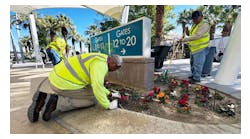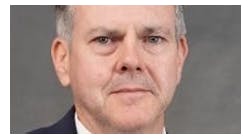Over the last few weeks, Safran Landing Systems has met with airlines to present its electric taxiing system, since carriers today are very attracted by this type of taxiing solution more efficient and more sustainable. Safran’s electric taxiing system would give airlines a solution that combines savings on operating costs (fuel costs reduced up to 4%, or several hundred thousand dollars per aircraft annually), autonomous taxiing without requiring the tugs nor jet engines, higher on-time departure rates and environmental advantages: reduced carbon and oxides of nitrogen (NOx) emissions, and less noise on the ground.
The electric taxiing system developed by Safran Landing Systems is also supported by Airbus. The partners signed an agreement at the Paris Air Show last summer to launch a joint “Authorization to market”.
A strategic solution that addresses airlines’ concerns
Safran’s electric taxiing system is a practical solution that addresses the concerns of today’s airlines, which are looking for more efficient operations coupled with a decrease in their environmental footprint. Aircraft engines are naturally designed for maximum efficiency in flight – and not on the ground moving an airplane. By installing this electric system, airlines can reduce both costs and environmental impact, including not only polluting emissions, but also noise.
What are the main advantages of this system?
Lower fuel consumption
The world’s constantly growing aircraft fleet and air traffic, especially for short-haul flights, means fuel consumption exceeding 5 million metric tons per year. Safran’s electric taxiing system can provide fuel savings of up to 4% of the total for short and medium range operation.
Reduced emissions
Installing Safran’s electric taxiing system limits polluting emissions during ground operations. For example, emissions of the greenhouse gas CO2 can be reduced by 60% on average. Carbon monoxide (CO) and unburned hydrocarbons (UHC), which must not pass a critical threshold, are reduced by the same order. NOx emissions, which often impact air quality around airports, are cut in half.
Reduced noise, fewer late departures
An airplane fitted with Safran’s electric taxiing system can move autonomously on ground, because it’s controlled by the pilot, and no longer needs a tractor. Congestions at the gates and on the runways are therefore decreased, as are turnaround times, to reduce delays for takeoffs and after landings. Furthermore, this far more silent electric drive system significantly reduces noise in the airport environment.
What exactly is an electric taxiing system?
The electric taxiing system developed by Safran allows the aircraft to maneuver without the aid of a special tractor, and to taxi without having to start its jet engines. Designed for single-aisle commercial jets, the system comprises two electric motors housed mounted on each main landing gear of the aircraft, with electrical power supplied by the plane’s existing auxiliary power unit (APU).
Electric taxiing: how it works
Two of the wheels on the main landing gear are fitted with electric motors to maximize performance and agility. A single controller and associated electronics allows the pilot to control the plane’s speed and direction during pushback and taxiing. The APU provides the electrical power needed by the engines. This system allows the airplane to taxi independently, without having to use its jet engines.
Safran is an international high-technology group and tier-1 supplier of systems and equipment in the Aerospace and Defense markets. Operating worldwide, Safran has nearly 58,000 employees and generated sales of 15.8 billion euros in 2016. Safran is listed on the Euronext Paris stock exchange, and its share is part of the CAC 40 and Euro Stoxx 50 indices.
Safran Landing Systems is the world leader in aircraft landing and braking systems. As a trusted partner to 30 major commercial, military, business and regional aircraft manufacturers, the company supports more than 27,000 aircraft making over 54,000 landings a day. For more information: www.safran-group.com andwww.safran-landing-systems.com / Follow @Safran and @SafranLandingS on Twitter Media contact Jérémie Roy: jeremie.roy@safrangrou





